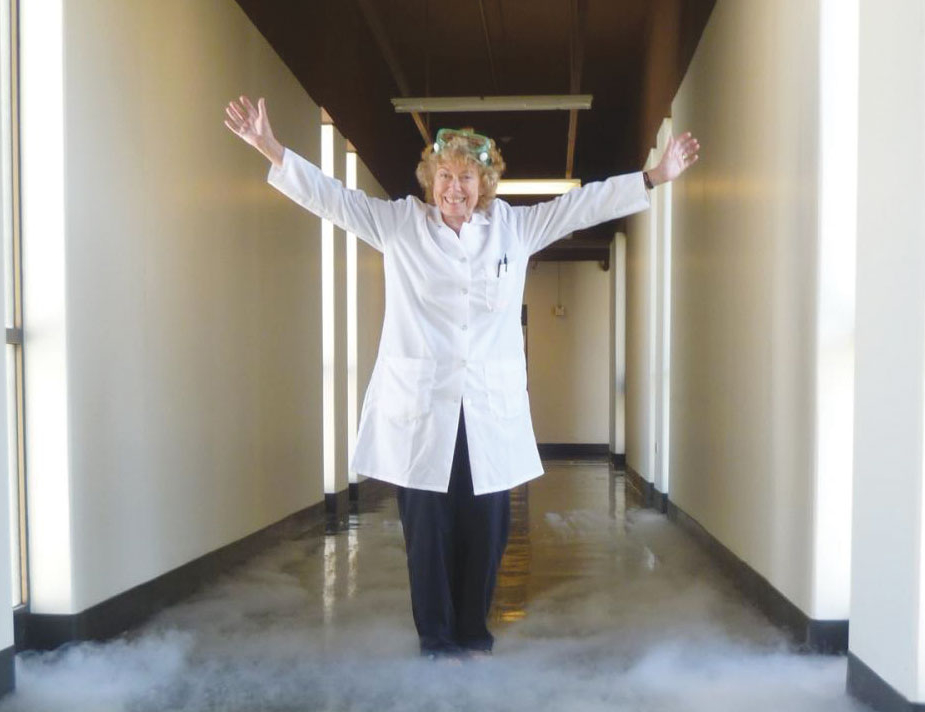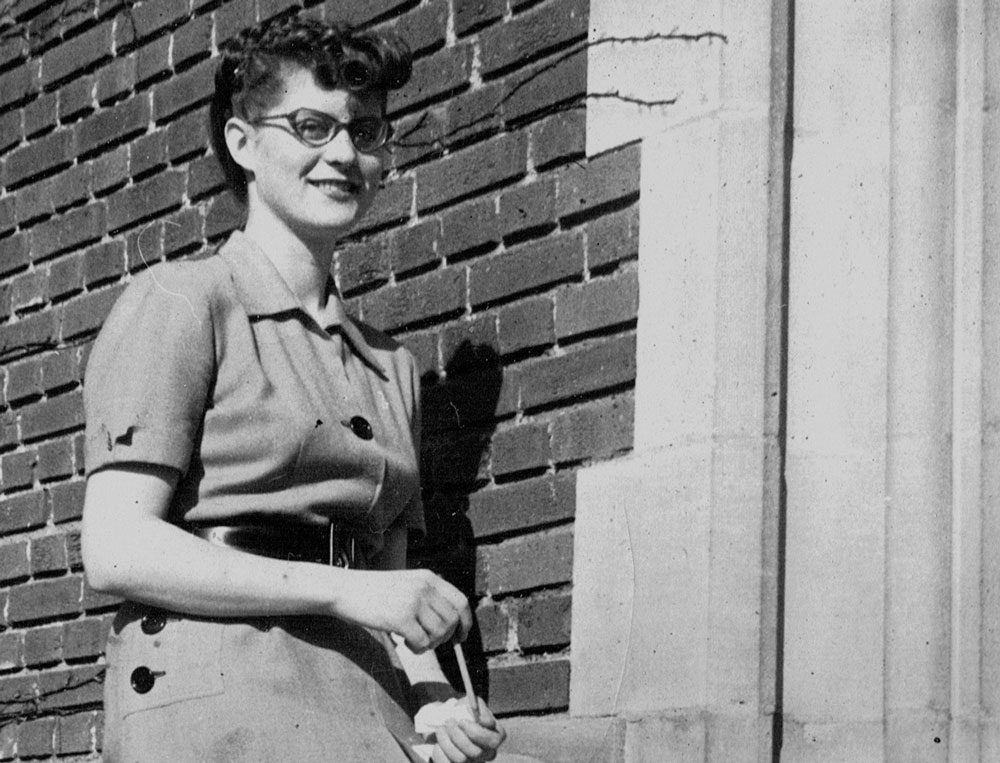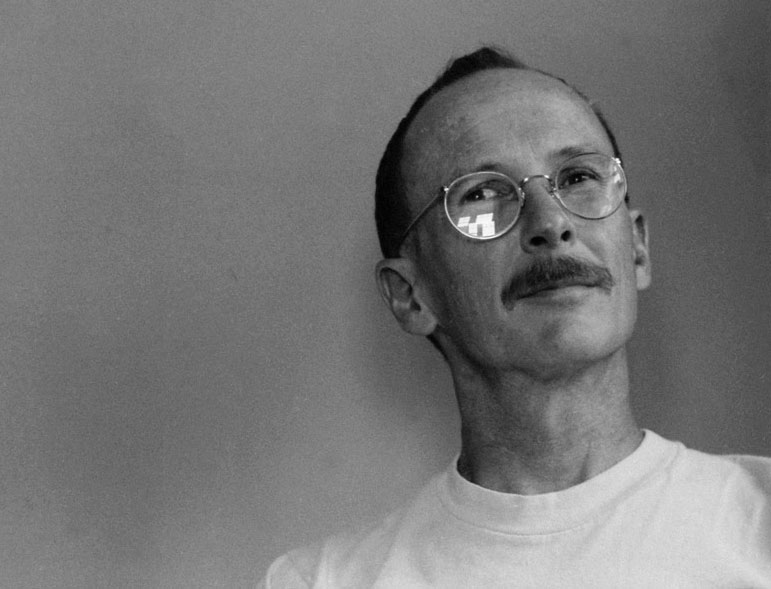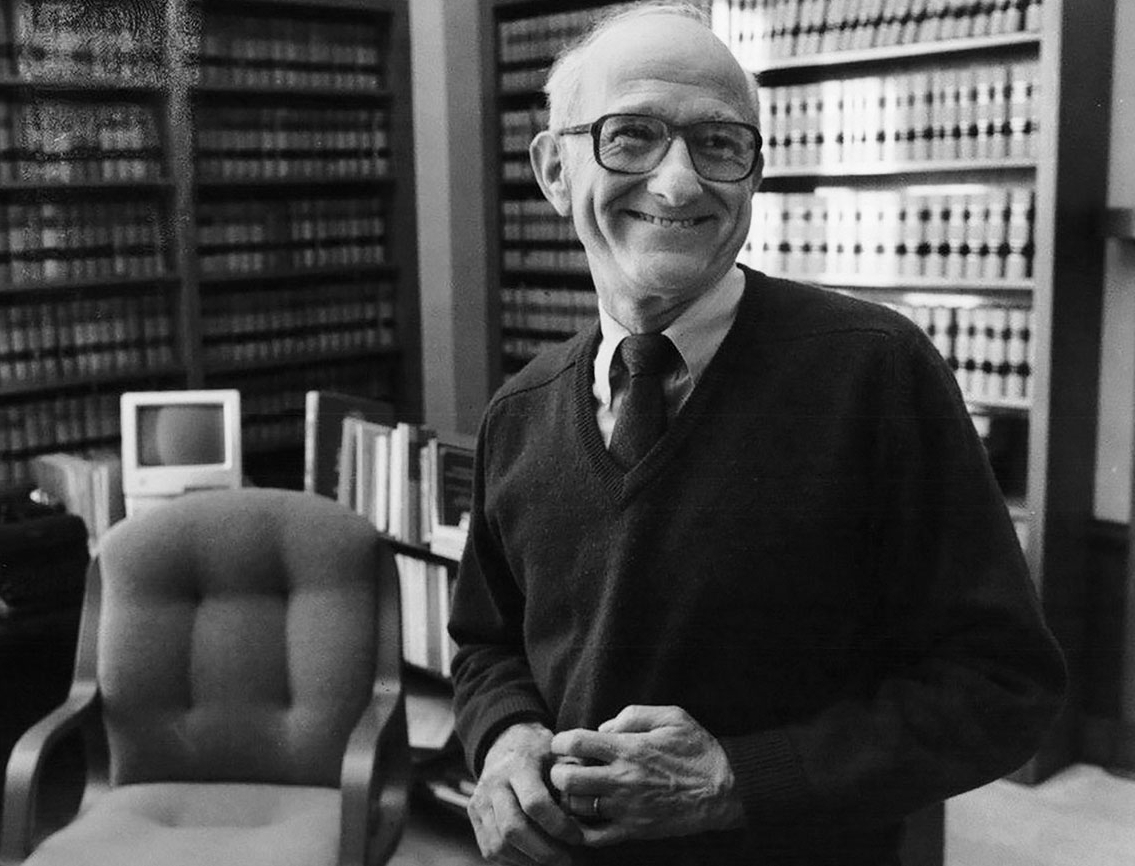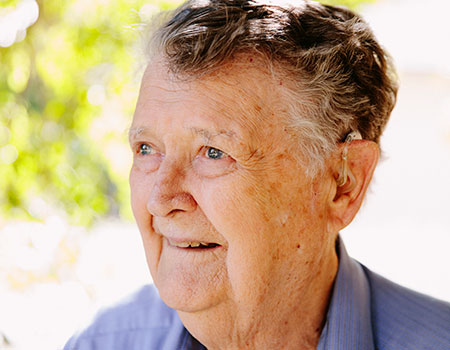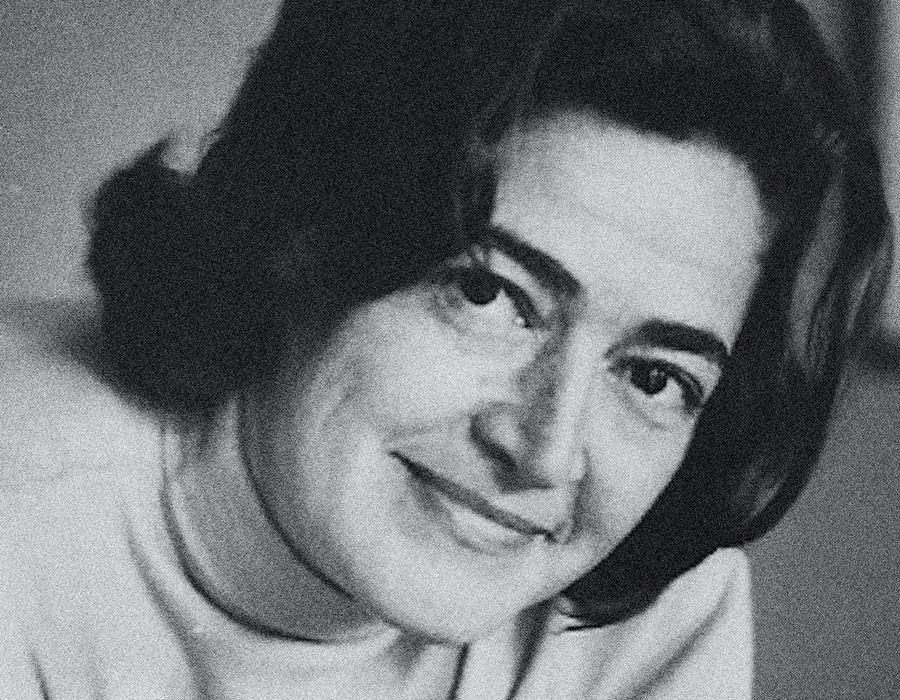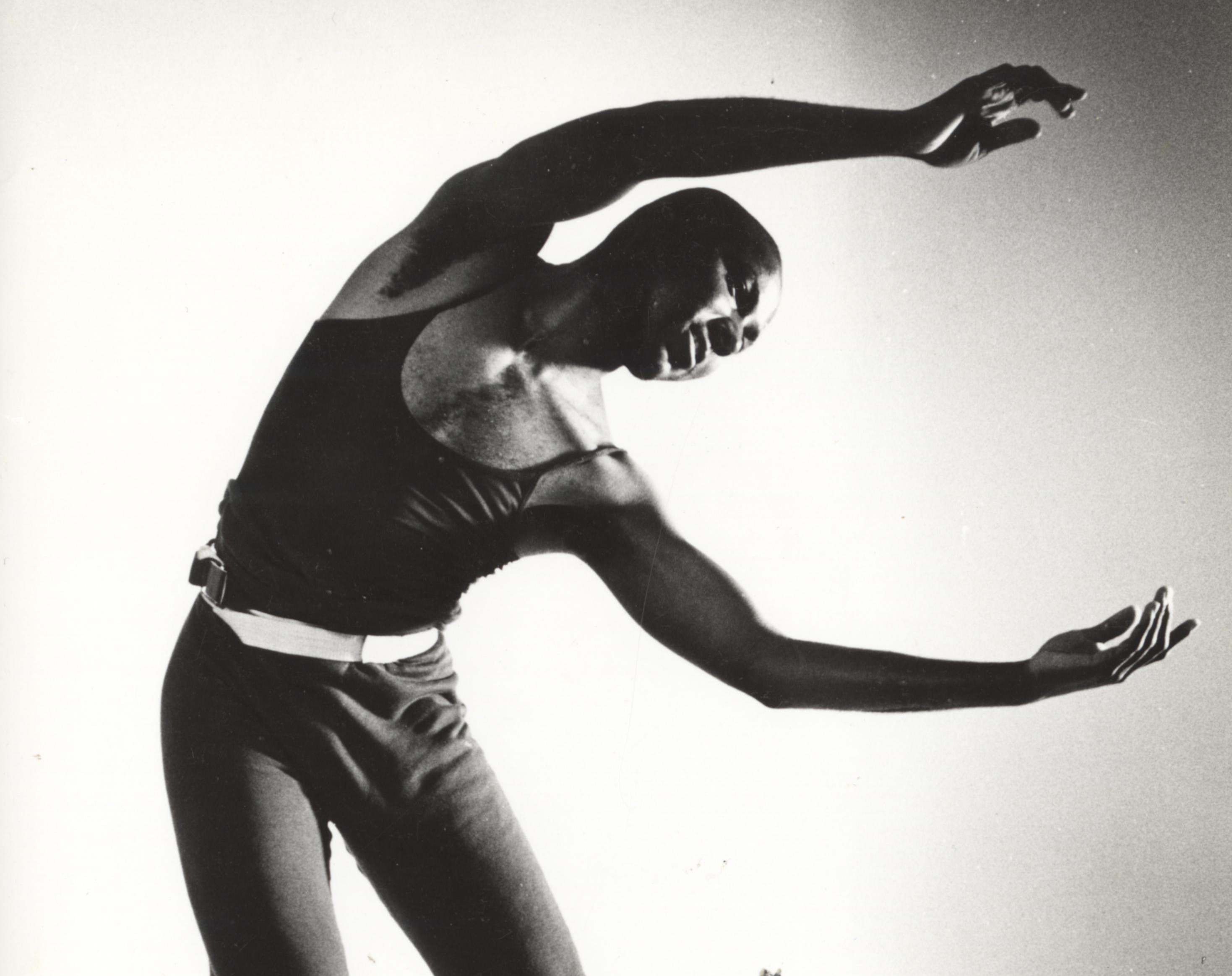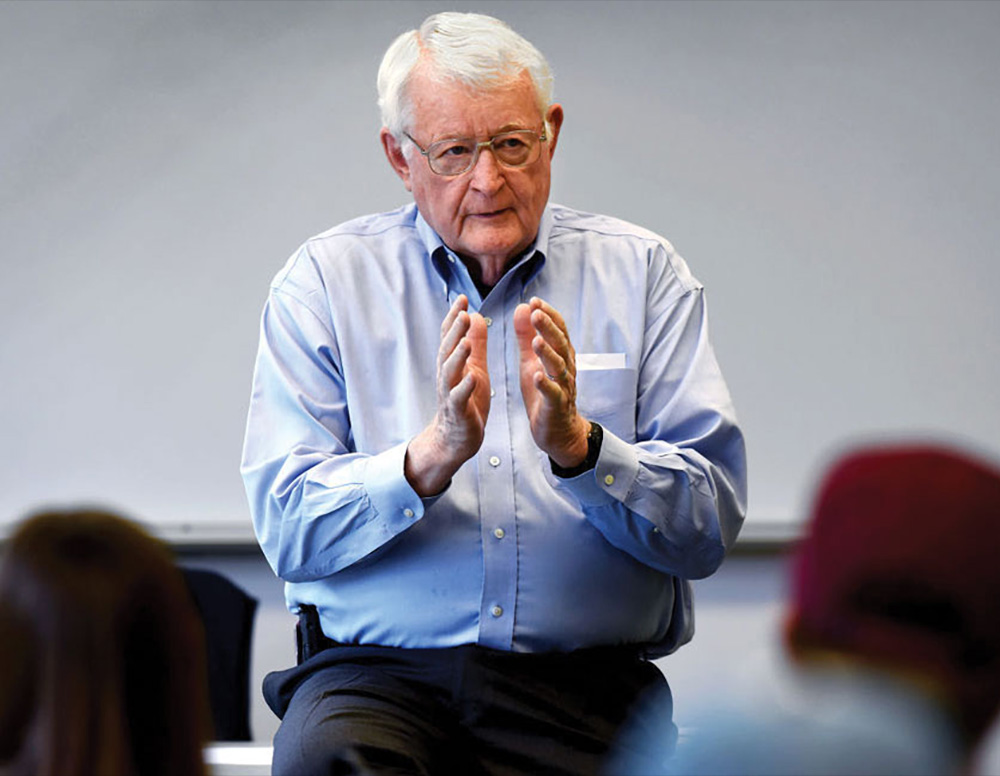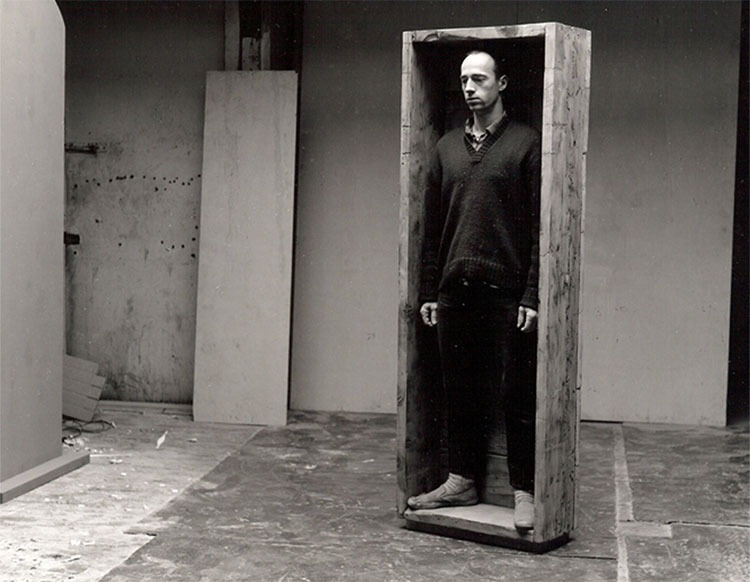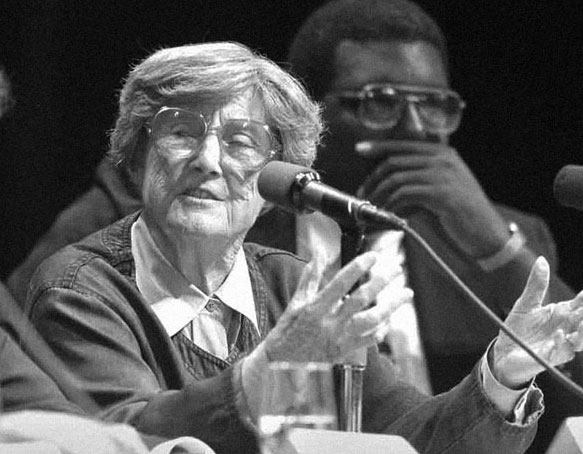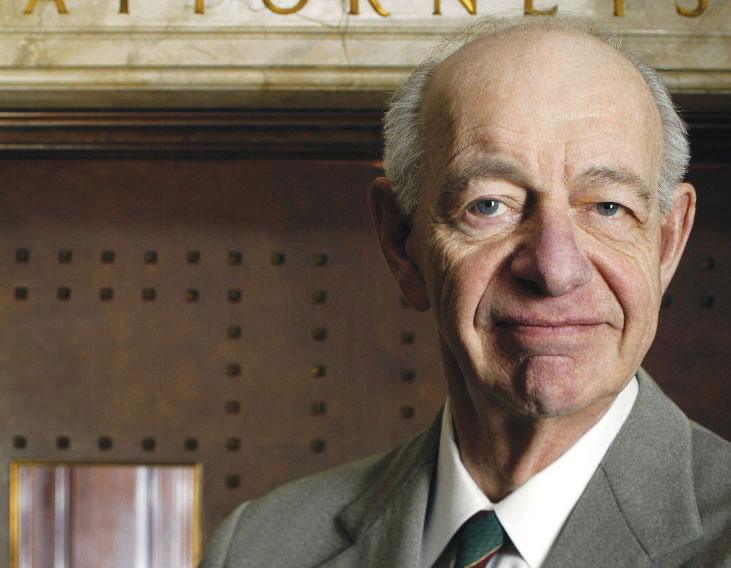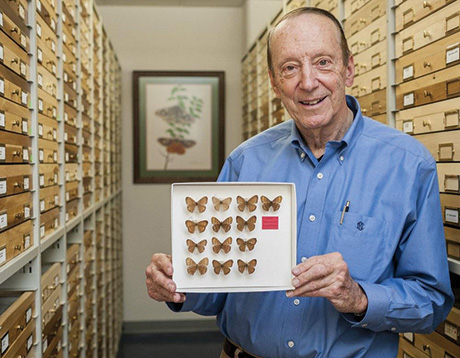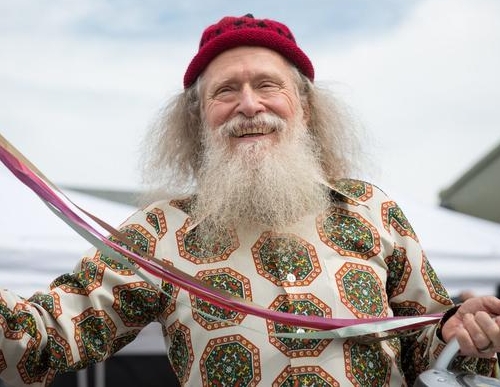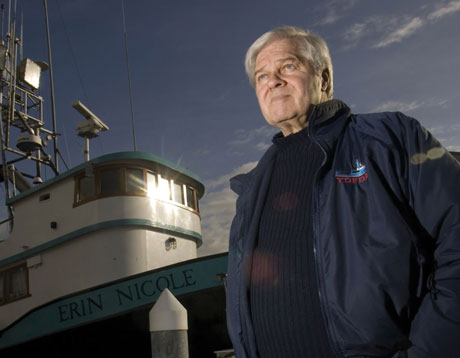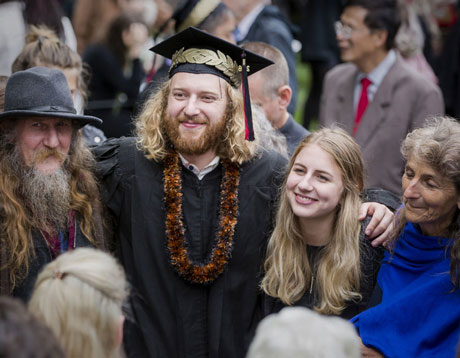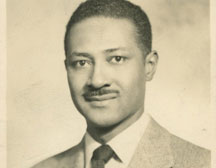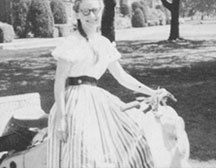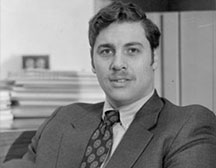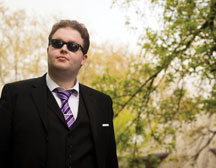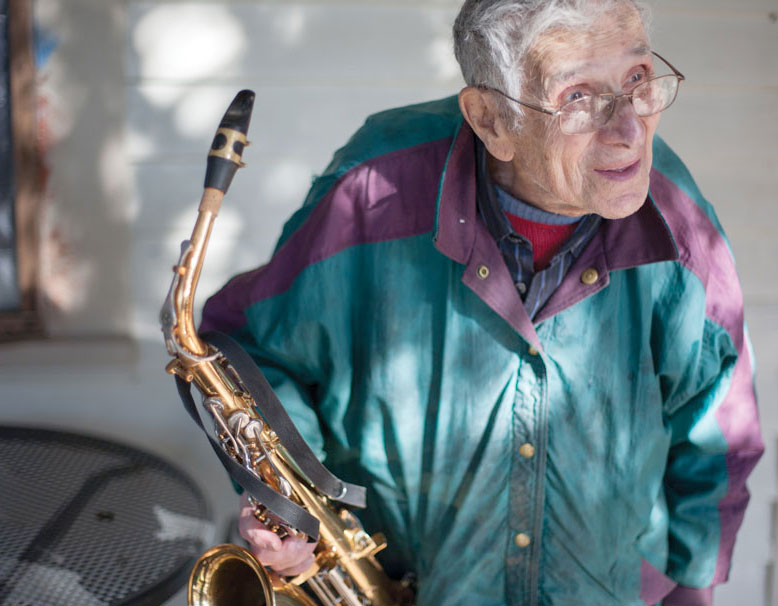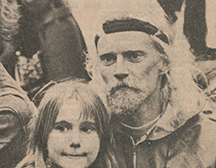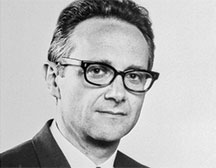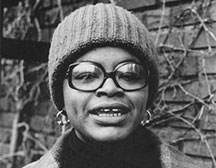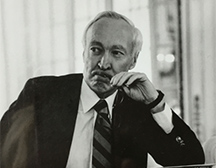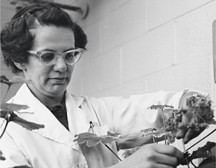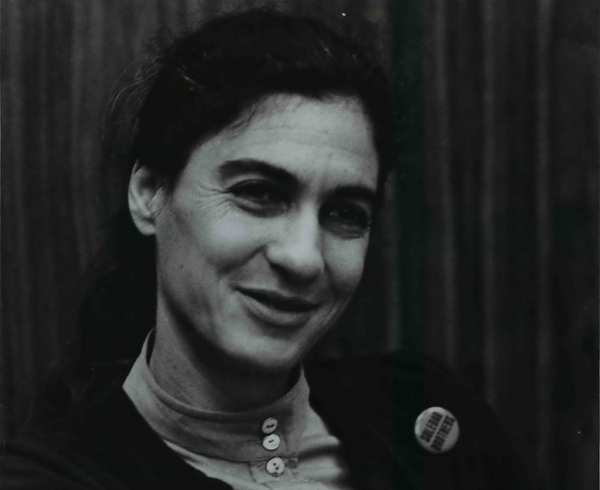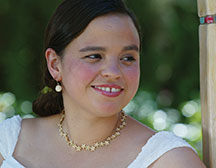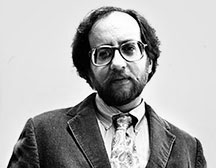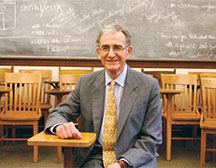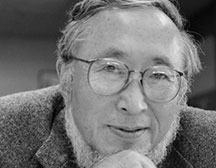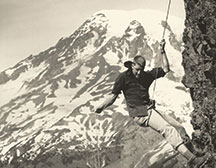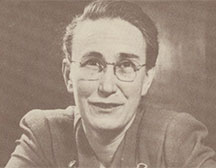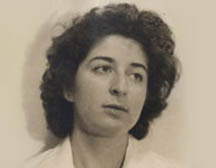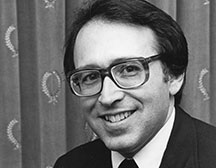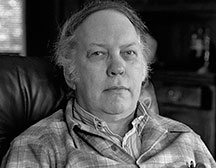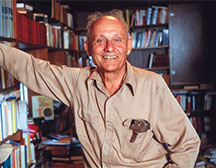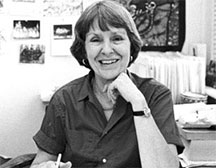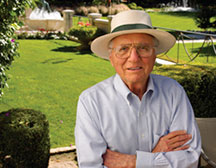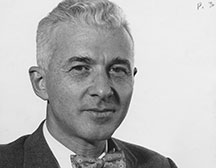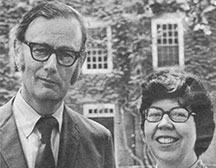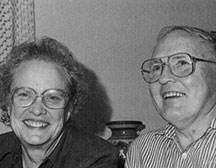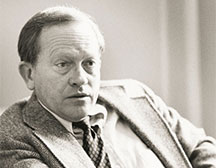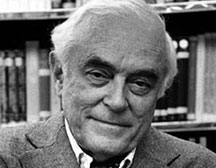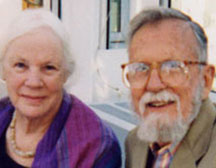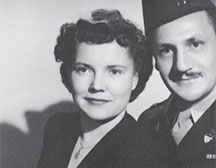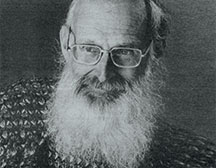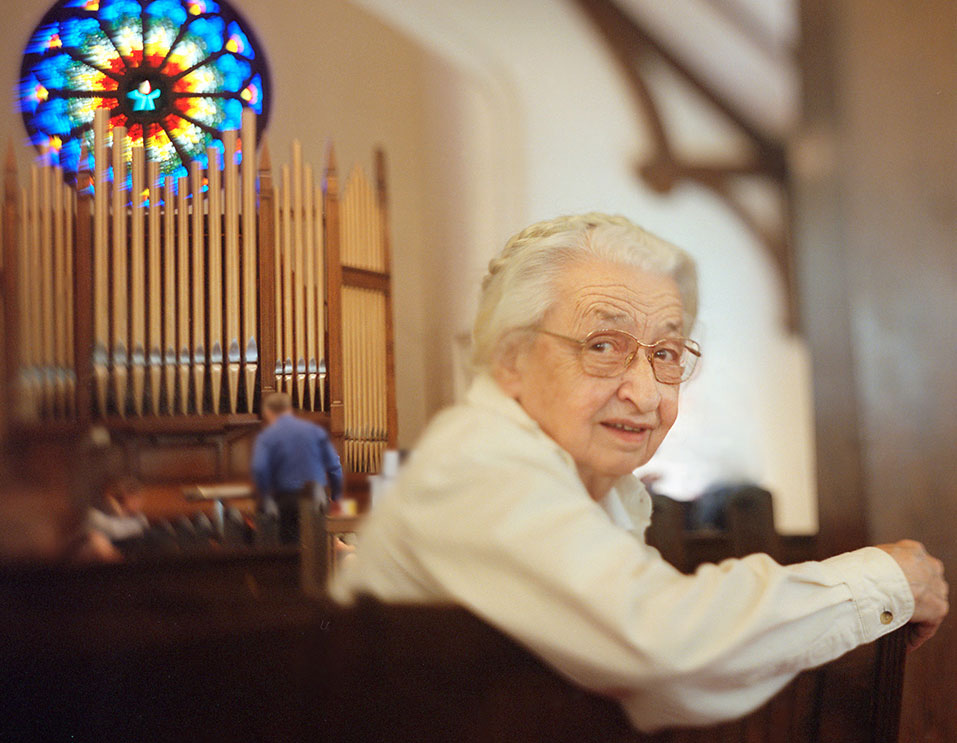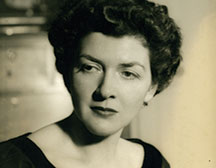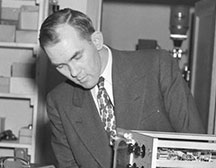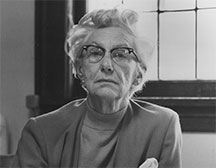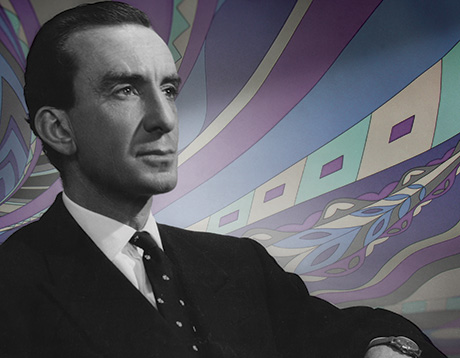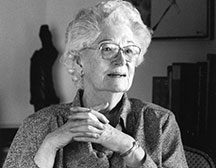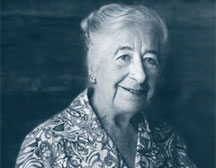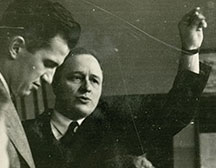Cartographer of the Brain
Richard Frederick Thompson ’52
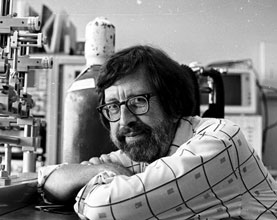
Photo by Irene Fertik, 1987; Courtesy of the USC University Archives
Richard Frederick Thompson ’52, September 16, 2014, at home in Nipomo, California.
One of the leading behavioral neuroscientists in the world, Dick researched the basic processes in the brain during the establishment of learning and the coding of memory. Regarded by many as the world’s leading authority in his field, he was the first neuroscientist to identify and map the neural circuits responsible for classical conditioning or Pavlovian learning.
“The fundamental driver behind Dick’s work was the notion of behavioral plasticity, i.e that neural synapses will change as a function of the organism’s experience and that these changes can be stored,” says Joel Davis ’63, who was a junior at Reed when he met Dick. “At higher levels we call this memory and learning. Part of Dick’s genius was to find and examine simpler systems that showed learning-like plasticity but in a more restrained cellular network. Making use of newly developed intracelluar recording and stimulating techniques, Dick explored and described the cellular basis of habituation, or the learned ability to ignore nonrelevant stimuli. Dick’s second major contribution also involved a simple, model system to ascertain the site of certain types of classical, or Pavlovian, conditioning.”
A native of Portland, Dick was interested in science from a young age and decided to enter the field after reading books written by American psychologist and behaviorist Karl Lashley. He earned a BA from Reed in psychology, studying with Prof. Frederick Courts [psychology 1945–69] and Prof. Monte Griffith [psychology 1926–54]. His senior thesis, “An Examination of the Continuity-Discontinuity Controversy in Discrimination Learning.” written with Courts, was devoted to testing one of Lashley’s hypotheses on discrimination learning in animals. Dick later remarked, “If I had to enroll in an undergraduate school again, I would enroll at Reed.”
He earned an MS and a PhD from the University of Wisconsin at Madison, doing NIH postdoctoral research in the laboratory of neurophysiology with C.N. Woolsey at Madison and in the neurophysiology lab of Anders Lundberg at the University of Goteborg in Sweden. During his own career, 1959 to 2011, Dick received continuous federal research grant support for his laboratory. “He was one of the first members of the Society for Neuroscience,” says Joel, “an organization that grew from a few hundred people in the late ’60s to over 35,000 scientists today.”
In 1959–67, he taught psychiatry and medical psychology at the University of Oregon Medical School (OHSU), where he pioneered work on habituation with Alden Spencer. At the school he met nursing student Judith K. Pedersen, a native of Denmark who had aspired to be a physician, but was forced to change her career path due to limited access for aspiring female medical students at the time. Dick and Judith married in 1960. They had three daughters, and Judith worked with Dick for more than 30 years as a senior research associate.
During the course of his career, Dick became known for his support and mentoring of his students, says Joel, who remembers visiting the Thompson Lab across the river at the medical school as a Reed junior and being so enthralled that he asked Dick if it were possible to collect the data for a thesis in his laboratory. “Prof. Courts agreed to the idea and I spent what became the start of a long association with Dick, which culminated in a PhD at UC Irvine in 1968—Dick’s first PhD student.”
Dick left Oregon to join the faculty in psychobiology, a new department, at UC Irvine (UCI). He was professor of neurobiology there until 1973, when he accepted an appointment as Karl Lashley Chair in psychology at Harvard. “We liked Harvard,” said Dick, “but could not stand living in the Boston area.” He returned to UCI, where he taught in 1975–80. From there, he moved to Stanford as Bing Professor of Human Biology, professor of psychology, and chair of the human biology program in 1980–87, and from there to the University of Southern California (USC). He was Keck Professor of Psychology and Biological Sciences, director of the Program in Neural, Informational, and Behavioral Sciences, senior research associate at the Gerontology Research Institute, and professor of neurology in the School of Medicine at USC. He retired from USC Dornsife as University Professor Emeritus Richard F. Thompson, William M. Keck Chair Emeritus in Psychology and Biological Sciences.
His research focused on identifying places in the brain where memories are stored for particular forms of classical conditioning, a fundamental form of learning. He showed that the brain saves a memory by strengthening the synapses, or connections between neurons. Neurons also create new synapses during the learning process, which he defined as the creation of memory. His work also looked at the effects of behavioral stress, estrogen, and aging on learning.
During the ’80s, Dick’s work in tracing the physical aspects of memory, based on the research of Russian psychologist Ivan Pavlov, was met with skepticism. In two decades’ time it became widely accepted, and Dick went on to identify and map the neural circuits involved in classical conditioning in 2002.
His contributions to science and psychology were recognized with awards such as the Commonwealth Fund Award, 1966; the Research Scientist Career Award from the National Institute of Mental Health, 1967–73; the distinguished scientific contribution award from the American Psychological Association, 1974, for work in brain function and behavior; the Howard Crosby Warren Medal from the Society of Experimental Psychologists, 1989, for outstanding contributions to experimental psychology; the John P. McGovern Award from the American Association for the Advancement of Science, 1999, for outstanding research in the behavioral sciences; the D.G. Marquis Behavioral Neuroscience Award, 1999, from the American Psychological Association; the USC Associates Award, 2000, for creativity in research and scholarship; the Karl Spencer Lashley Award from the American Philosophical Society, 2007; the Gold Medal Award for Life Achievement in the Science of Psychology from the American Psychological Foundation, 2010; and the W. Horsley Gantt medal from the Pavlovian Society, 2011, for his discoveries regarding brain substrates of basic associative learning and memory.
Dick was a member of the National Academy of Sciences, the American Academy of Arts & Sciences, and the American Philosophical Society. He served as president of the American Psychological Society and was appointed a member of the Neuroscience Steering Committee for the National Institute of Mental Health and a member of the President’s National Medal of Science Committee. He also was appointed to the National Science Board, overseeing the National Science Foundation and providing advice on matters of science policy to the president and Congress.
He wrote numerous books and was editor of several others; he published 450 research papers. His first book, Foundations of Physiological Psychology, was published in 1967. Joel notes, “Foundations was really the first attempt to provide a sound physiological basis for perception and learning. It crossed the barrier from what was once called physiological psychology into the discipline of neuroscience.” Dick’s textbook The Brain: A Neuroscience Primer presents an overview of brain anatomy and physiology—from molecules to the mind. Memory: The Key to Consciousness, written with longtime colleague Stephen Madigan, focuses on cutting-edge research in behavioral science and neuroscience, exploring the mechanism of memory and learning. He served as chief editor for Physiological Psychology and the Journal of Comparative and Physiological Psychology and was chief editor and founder of Behavioral Neuroscience.
In response to news of Dick’s death, USC Provost Elizabeth Garrett stated that the university community had lost not only a world-renowned scholar, but also an inspiring mentor. Dick guided the careers of more than 60 graduate students and postdoctoral students. “As he helped to set the trajectory for modern neuroscience, Dick’s curiosity and aptitude across many areas of the sciences and humanities allowed him to answer some of the most difficult questions related to human behavior.
“A huge coterie of grad students and postdocs were strongly influenced by Dick’s intelligence and generosity, including shared authorships and recommendations,” says Joel. “Many of his students gathered to toast his memory. From 1962 to the present, they represented over 60 years of Dick’s commitment to scientific education.”
In his leisure time, Dick enjoyed tennis, fishing, swimming, reading mysteries, playing chess, and travel. Survivors include his wife; daughters Kathryn, Elizabeth, and Virginia; and seven grandchildren.
“Other than my father, Dick Thompson had more influence over my life and thinking than anyone else,” Joel says. “He will be missed.”
Appeared in Reed magazine: March 2015
comments powered by Disqus
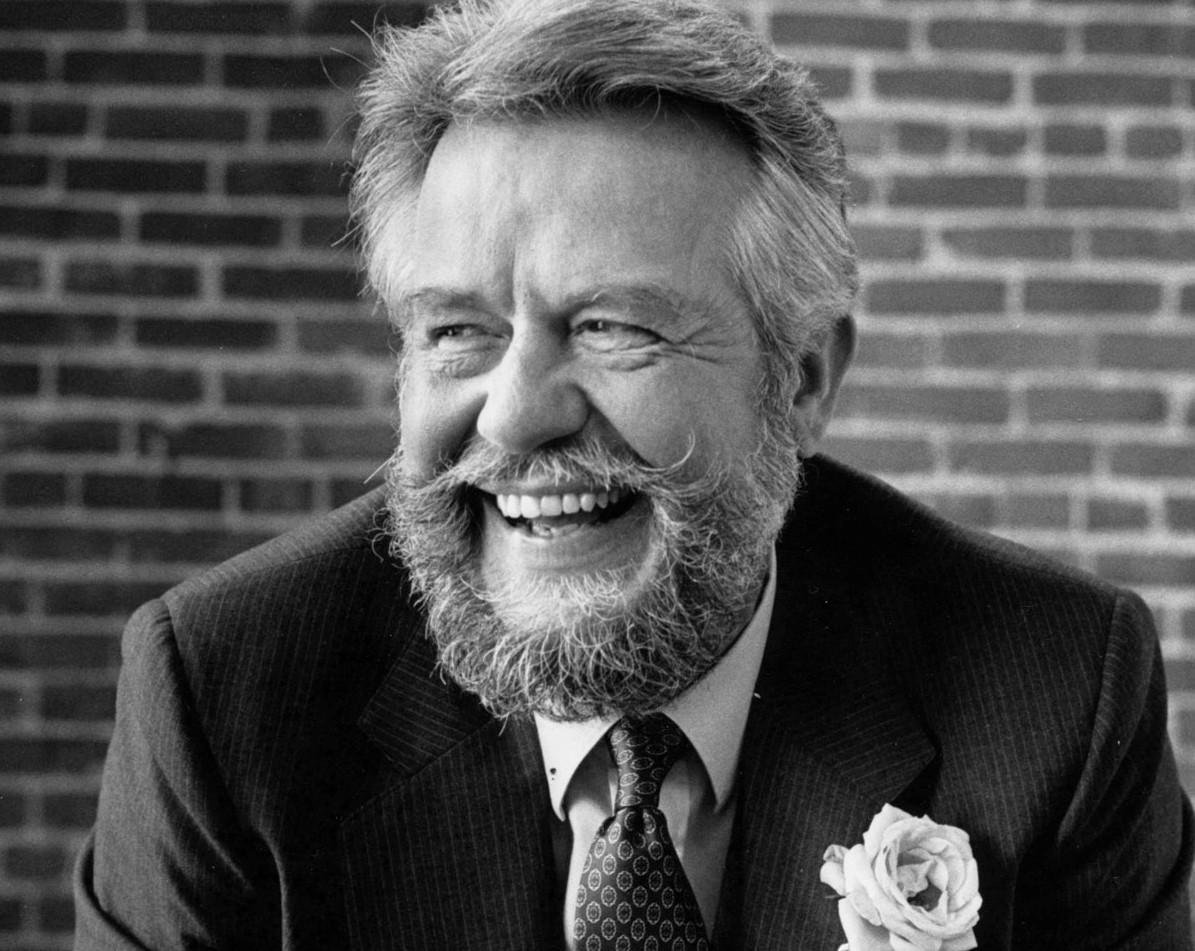
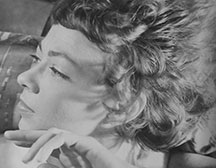
![Photo of Prof. Marvin Levich [philosophy 1953–94]](https://www.reed.edu/reed-magazine/in-memoriam/assets/images/2022/LTL-levich1.jpg)
![Photo of President Paul E. Bragdon [1971–88]](https://www.reed.edu/reed-magazine/in-memoriam/assets/images/2020/Bragdon.jpg)
![Photo of Prof. Edward Barton Segel [history 1973–2011]](https://www.reed.edu/reed-magazine/in-memoriam/assets/images/2020/Segel.jpg)
